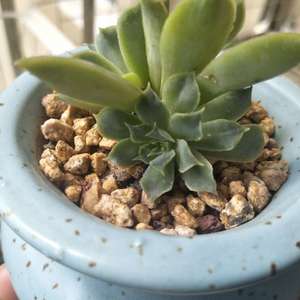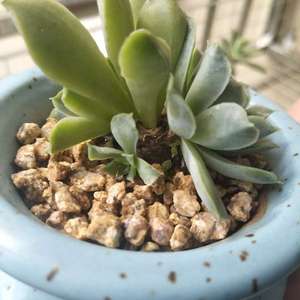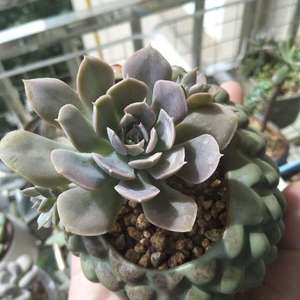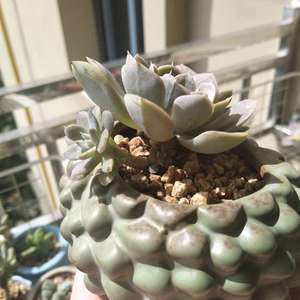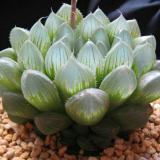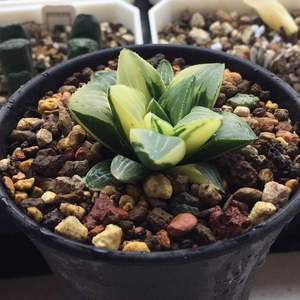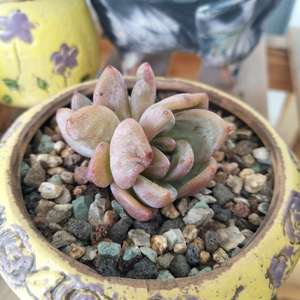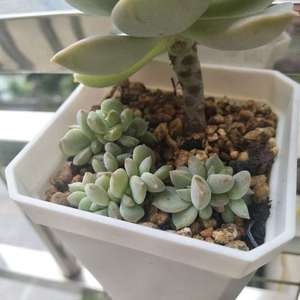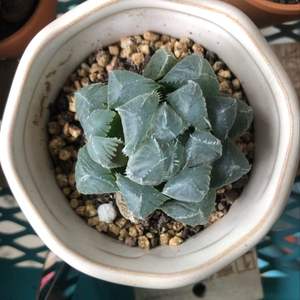文章
Miss Chen
2018年09月08日

Peonies (Paeonia spp.) can grow well in containers. Common garden peonies (Paeonia lactiflora), which are hardy in U.S. Department of Agriculture plant hardiness zones 3 through 8, are herbaceous perennials that die down in fall. Tree peonies (Paeonia suffruticosa, USDA zones 4 through 8) are woody shrubs. Select containers that complement your garden's style, such as metal containers for contemporary gardens, faded terracotta for Mediterranean gardens, or decorative clay pots for cottage gardens.

Containers for Growing Peonies
Peonies need large containers with drainage holes. Peony root balls are large, and their containers should fit the root balls without crushing them, plus another inch or two of space around root balls' sides and bases. A 5-gallon container is usually large enough for one peony.
Most frost-proof containers are suitable, including clay, wood and plastic. Common garden peonies don't tolerate transplanting well, and tree peonies are slow-growing, so both plants should stay in their containers for three or four years. Heavy containers such as clay help prevent tree peonies from blowing over in strong winds, but dry out quickly compared to wood and plastic containers. Wood containers made of cypress or cedar are rot-resistant.
Sites and Potting Soils
Full-sun or partially shaded sites are best for growing peonies, and the plants need organically-rich, well-draining potting soil. These large plants are heavy and difficult to move, so choose your growing site well, or place the pots on boards with wheels.
A mixture of soilless potting soil and well-rotted manure or rich garden compost is suitable for growing peonies. You can buy commercial soilless potting soil or you can mix your own using 1 part sphagnum peat moss and 1 part perlite or vermiculite. Mix 2 shovels of potting soil with 1 shovel of manure or compost, and fill the containers with this mixture. Every spring, when new growth appears on the peonies, scrape the loose potting soil mixture from the surface of the containers and replace it with fresh mixture.
Water and Fertilizer
Peonies in containers need more water and fertilizer than plants in the ground. Water the peonies when the soil surface is dry. Slowly pour water over the potting soil until it appears through the drainage holes in the base of the container. In hot weather, peonies may need watering once or more per day.

Fertilize peonies in pots once every month while the plants are in leaf. Dilute 1/2 teaspoon of a liquid 15-30-15 fertilizer in 1 gallon of water, and apply the solution to the potting soil. You can replace water with fertilizer solution if the peonies need watering. Manufacturer's instructions vary between products, so read and follow the instructions on the label.
Frost Protection
An advantage of growing peonies in containers is that you can move them indoors to protect them from frosts. Freezing temperatures can damage peonies and affect flowering in the following season.
When common garden peonies have died down and tree peonies have lost all their leaves, move the containers to an unheated indoor area, such as a garage. Water the containers when the soil surface is dry to a depth of 1 inch. The peonies aren't growing and using water at this time. It's important not to water so much that the potting soil becomes soggy, which can cause rotting. Move the containers outdoors again when new growth appears in spring.

Containers for Growing Peonies
Peonies need large containers with drainage holes. Peony root balls are large, and their containers should fit the root balls without crushing them, plus another inch or two of space around root balls' sides and bases. A 5-gallon container is usually large enough for one peony.
Most frost-proof containers are suitable, including clay, wood and plastic. Common garden peonies don't tolerate transplanting well, and tree peonies are slow-growing, so both plants should stay in their containers for three or four years. Heavy containers such as clay help prevent tree peonies from blowing over in strong winds, but dry out quickly compared to wood and plastic containers. Wood containers made of cypress or cedar are rot-resistant.
Sites and Potting Soils
Full-sun or partially shaded sites are best for growing peonies, and the plants need organically-rich, well-draining potting soil. These large plants are heavy and difficult to move, so choose your growing site well, or place the pots on boards with wheels.
A mixture of soilless potting soil and well-rotted manure or rich garden compost is suitable for growing peonies. You can buy commercial soilless potting soil or you can mix your own using 1 part sphagnum peat moss and 1 part perlite or vermiculite. Mix 2 shovels of potting soil with 1 shovel of manure or compost, and fill the containers with this mixture. Every spring, when new growth appears on the peonies, scrape the loose potting soil mixture from the surface of the containers and replace it with fresh mixture.
Water and Fertilizer
Peonies in containers need more water and fertilizer than plants in the ground. Water the peonies when the soil surface is dry. Slowly pour water over the potting soil until it appears through the drainage holes in the base of the container. In hot weather, peonies may need watering once or more per day.

Fertilize peonies in pots once every month while the plants are in leaf. Dilute 1/2 teaspoon of a liquid 15-30-15 fertilizer in 1 gallon of water, and apply the solution to the potting soil. You can replace water with fertilizer solution if the peonies need watering. Manufacturer's instructions vary between products, so read and follow the instructions on the label.
Frost Protection
An advantage of growing peonies in containers is that you can move them indoors to protect them from frosts. Freezing temperatures can damage peonies and affect flowering in the following season.
When common garden peonies have died down and tree peonies have lost all their leaves, move the containers to an unheated indoor area, such as a garage. Water the containers when the soil surface is dry to a depth of 1 inch. The peonies aren't growing and using water at this time. It's important not to water so much that the potting soil becomes soggy, which can cause rotting. Move the containers outdoors again when new growth appears in spring.
0
0
文章
Miss Chen
2018年09月08日

For a colorful, showy display of flowers, few plants out-perform the peony (Paeonia spp.), a perennial that grows in U.S. Department of Agriculture plant hardiness zones 3 through 8, with some variation among the different varieties. Although most peonies are attractive even when not in bloom, it can be discouraging when a plant fails to bloom or produces only a few flowers. Giving a peony some extra care or making a few adjustments can help prevent or correct this problem.

Plant Maturity and Depth
A peony might not bloom simply because it's too immature; in that case, all you need to do is wait a while to see flowers. If you've recently planted a new, nursery-grown peony, it may take several years to reach a size and maturity that can support flowering. It could take even longer to see flowers -- up to four or five years -- if you've grown the plant from seed. If you're dividing a larger plant to make new plants, the number of dormant buds, or "eyes," on each new division can also influence the length of time before flowers appear. To speed flowering by these new plants, make large divisions with at least three to five eyes each. Planting peonies too deeply can also inhibit flowering, so position new plants or divisions so buds are no more than 1 or 2 inches below the soil surface.
Correct Fertilizer
Although peonies benefit from rich soil that contains a good supply of nutrients, it's important to feed the plants properly and not use too much nitrogen, which can promote growth of stems and leaves at the expense of flowers. For best results, select a granular, low-nitrogen fertilizer such as 5-10-10, applying it at a rate of 2 to 3 pounds per 100 square feet of planted area. Apply the fertilizer once per season in the spring, when the plant's stems are about 3 inches tall, working it carefully into the ground. Keep fertilizer away from the plant's stems to prevent burning, and don't disturb tender new shoots; water the fertilizer in well.
Sun and Other Issues
Peonies need abundant light to set flower buds, so pick a planting site that gets at least six or more hours of full sun daily; a spot that gets too much shade can result in few or no flowers. If you have a peony that's recently stopped blooming, this could be because other nearby plants have become large and block the peony's access to light. Prune back surrounding plants as needed to give the peony more light, or consider relocating the peony to a brighter spot. Removing leaves and stems as you tidy the garden during the summer can also contribute to poor flowering because this weakens the plant and interferes with its ability to store energy for the next year. Delay cleanup until fall, when the plant's growth has slowed and foliage is wilted and partly dry.

Disease Control
Sometimes you might see flower buds develop on a peony plant that don't enlarge, and they eventually dry up and drop off the plant. This can indicate the presence of a fungal disorder such as blight or leaf blotch that stops the bud from producing a flower. These diseases might also cause black spots on leaves and stems. They are best prevented by keeping foliage as dry as possible, so water only at the plant's base on sunny days, and cut peonies back to the ground in late fall, removing all plant debris that can harbor fungal microorganisms. Wear gloves and clean pruning blades in rubbing alcohol between each cut to prevent spreading disease.

Plant Maturity and Depth
A peony might not bloom simply because it's too immature; in that case, all you need to do is wait a while to see flowers. If you've recently planted a new, nursery-grown peony, it may take several years to reach a size and maturity that can support flowering. It could take even longer to see flowers -- up to four or five years -- if you've grown the plant from seed. If you're dividing a larger plant to make new plants, the number of dormant buds, or "eyes," on each new division can also influence the length of time before flowers appear. To speed flowering by these new plants, make large divisions with at least three to five eyes each. Planting peonies too deeply can also inhibit flowering, so position new plants or divisions so buds are no more than 1 or 2 inches below the soil surface.
Correct Fertilizer
Although peonies benefit from rich soil that contains a good supply of nutrients, it's important to feed the plants properly and not use too much nitrogen, which can promote growth of stems and leaves at the expense of flowers. For best results, select a granular, low-nitrogen fertilizer such as 5-10-10, applying it at a rate of 2 to 3 pounds per 100 square feet of planted area. Apply the fertilizer once per season in the spring, when the plant's stems are about 3 inches tall, working it carefully into the ground. Keep fertilizer away from the plant's stems to prevent burning, and don't disturb tender new shoots; water the fertilizer in well.
Sun and Other Issues
Peonies need abundant light to set flower buds, so pick a planting site that gets at least six or more hours of full sun daily; a spot that gets too much shade can result in few or no flowers. If you have a peony that's recently stopped blooming, this could be because other nearby plants have become large and block the peony's access to light. Prune back surrounding plants as needed to give the peony more light, or consider relocating the peony to a brighter spot. Removing leaves and stems as you tidy the garden during the summer can also contribute to poor flowering because this weakens the plant and interferes with its ability to store energy for the next year. Delay cleanup until fall, when the plant's growth has slowed and foliage is wilted and partly dry.

Disease Control
Sometimes you might see flower buds develop on a peony plant that don't enlarge, and they eventually dry up and drop off the plant. This can indicate the presence of a fungal disorder such as blight or leaf blotch that stops the bud from producing a flower. These diseases might also cause black spots on leaves and stems. They are best prevented by keeping foliage as dry as possible, so water only at the plant's base on sunny days, and cut peonies back to the ground in late fall, removing all plant debris that can harbor fungal microorganisms. Wear gloves and clean pruning blades in rubbing alcohol between each cut to prevent spreading disease.
0
1
成长记
echo_zly
2018年09月07日

3月25日就种下11球,挤在23口径的吊盆。8月左右开花的,球种就是最后一张图里的白色小球,大点的球是普粉,隔月就能陆续开花。风雨兰很好养,粗养即可。
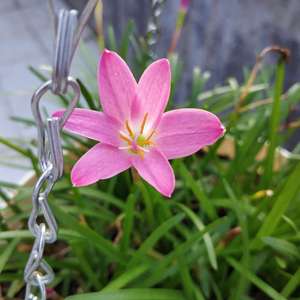
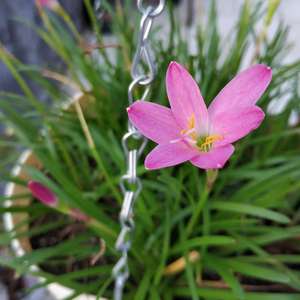
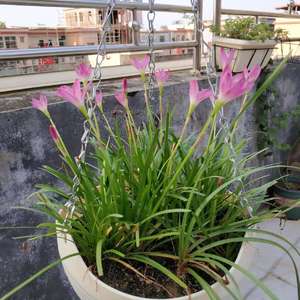
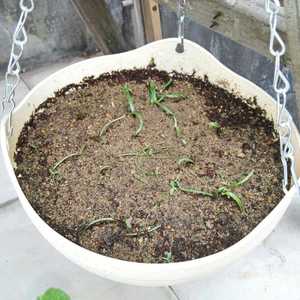
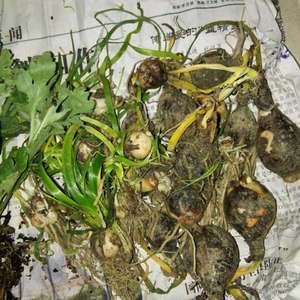





1
0
文章
Miss Chen
2018年09月06日

A plant for pond edges, bog gardens and other wet sites, horsetail (Equisetum hyemale) grows in stands of bamboo-like, dark green stems. Also called scouring rush, horsetail is hardy in U.S. Department of Agriculture plant hardiness zones 3 through 11, and is a member of an ancient plant family that dates back 350 million years, notes the Missouri Botanical Garden. One reason for this perennial's long survival is its extremely aggressive spreading habit, but growing horsetail in containers gives you some control.
Containing Horsetail

Horsetail spreads outward through underground stems called rhizomes, and containers provide a barrier to these rhizomes. Plant horsetail in a container, with drainage holes, that's just large enough to accommodate the plant's root ball. Place a sheet of fine mesh, such as screen mesh, over the drainage holes to prevent horsetail rhizomes from growing through them, and spread a layer of general purpose potting soil over the mesh. Place the horsetail in the container. The top of the root ball should be 1 inch below the container rim. Fill in gaps around the root ball with more potting soil, and apply water until it runs though the drainage holes.
Planting in Water

Horsetail thrives in water gardens and on stream banks. Providing year-round color and structure in wet, full-sun and partial-shade sites, horsetail tolerates water to a depth of 4 inches over its roots. To add horsetail to your water garden or pond site, spread a 1-inch layer of gravel over the potting soil in the horsetail container to protect it. Place bricks on the bottom of the planting site to provide a firm, level base. Sink the horsetail container into the water slowly until it's submerged and resting firmly on the bricks.
Planting in Soil

Horsetail provides strong, vertical lines in Japanese gardens and can grow where few other plants survive. Dig a hole 2 or 3 inches wider than the horsetail container and 1 inch less deep. Place the container in the hole, and check that it's level. Twisting the container and pushing down gently helps level the container and firm the soil beneath it. Check that the container rim is protruding from the soil by 1 inch, and fill in the gaps around it with dug soil. Water the ground around the container to settle the soil, and fill in any hollows with more soil.
Controlling Horsetail
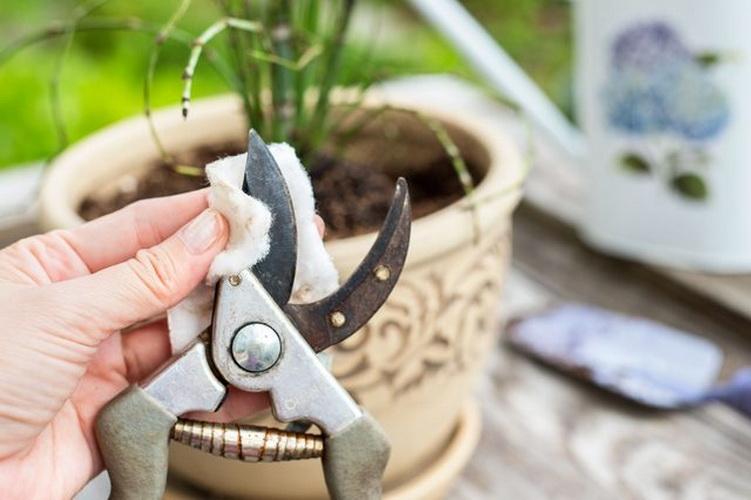
Prune regularly to control horsetail's spreading habit. Horsetail grows 2 to 4 feet tall and spreads indefinitely in favorable conditions. Check the horsetail monthly, at least, for rhizomes climbing over the container rim and stems with cone-like, spore-producing heads, which usually appear in spring. Clean pruning shear blades with rubbing alcohol, and prune escaping rhizomes and fruiting stems at ground level. Wipe the pruning shear blades with rubbing alcohol again after use. Place pruned horsetail debris in a sealed plastic bag in the trash. Don't grow horsetail in areas accessible to pets or livestock. Horsetail can be deadly to animals when eaten.
Containing Horsetail

Horsetail spreads outward through underground stems called rhizomes, and containers provide a barrier to these rhizomes. Plant horsetail in a container, with drainage holes, that's just large enough to accommodate the plant's root ball. Place a sheet of fine mesh, such as screen mesh, over the drainage holes to prevent horsetail rhizomes from growing through them, and spread a layer of general purpose potting soil over the mesh. Place the horsetail in the container. The top of the root ball should be 1 inch below the container rim. Fill in gaps around the root ball with more potting soil, and apply water until it runs though the drainage holes.
Planting in Water

Horsetail thrives in water gardens and on stream banks. Providing year-round color and structure in wet, full-sun and partial-shade sites, horsetail tolerates water to a depth of 4 inches over its roots. To add horsetail to your water garden or pond site, spread a 1-inch layer of gravel over the potting soil in the horsetail container to protect it. Place bricks on the bottom of the planting site to provide a firm, level base. Sink the horsetail container into the water slowly until it's submerged and resting firmly on the bricks.
Planting in Soil

Horsetail provides strong, vertical lines in Japanese gardens and can grow where few other plants survive. Dig a hole 2 or 3 inches wider than the horsetail container and 1 inch less deep. Place the container in the hole, and check that it's level. Twisting the container and pushing down gently helps level the container and firm the soil beneath it. Check that the container rim is protruding from the soil by 1 inch, and fill in the gaps around it with dug soil. Water the ground around the container to settle the soil, and fill in any hollows with more soil.
Controlling Horsetail

Prune regularly to control horsetail's spreading habit. Horsetail grows 2 to 4 feet tall and spreads indefinitely in favorable conditions. Check the horsetail monthly, at least, for rhizomes climbing over the container rim and stems with cone-like, spore-producing heads, which usually appear in spring. Clean pruning shear blades with rubbing alcohol, and prune escaping rhizomes and fruiting stems at ground level. Wipe the pruning shear blades with rubbing alcohol again after use. Place pruned horsetail debris in a sealed plastic bag in the trash. Don't grow horsetail in areas accessible to pets or livestock. Horsetail can be deadly to animals when eaten.
0
0
文章
Miss Chen
2018年09月06日

With their 2- to 5-feet-tall spikes and their bell-shaped, 2- to 3-inch flowers that have spotted throats and range in color from yellow and white to pink or purple, common foxgloves (Digitalis purpurea) are easily identifiable in the garden. These European natives are deer- and rabbit-resistant and attract hummingbirds. Hardy in U.S. Department of Agriculture plant hardiness zones 4 through 8, foxgloves prefer well-drained soil in a sunny to partially shady area of the garden. With proper care, they grow oblong, light-green foliage in their first year and bloom the next year.
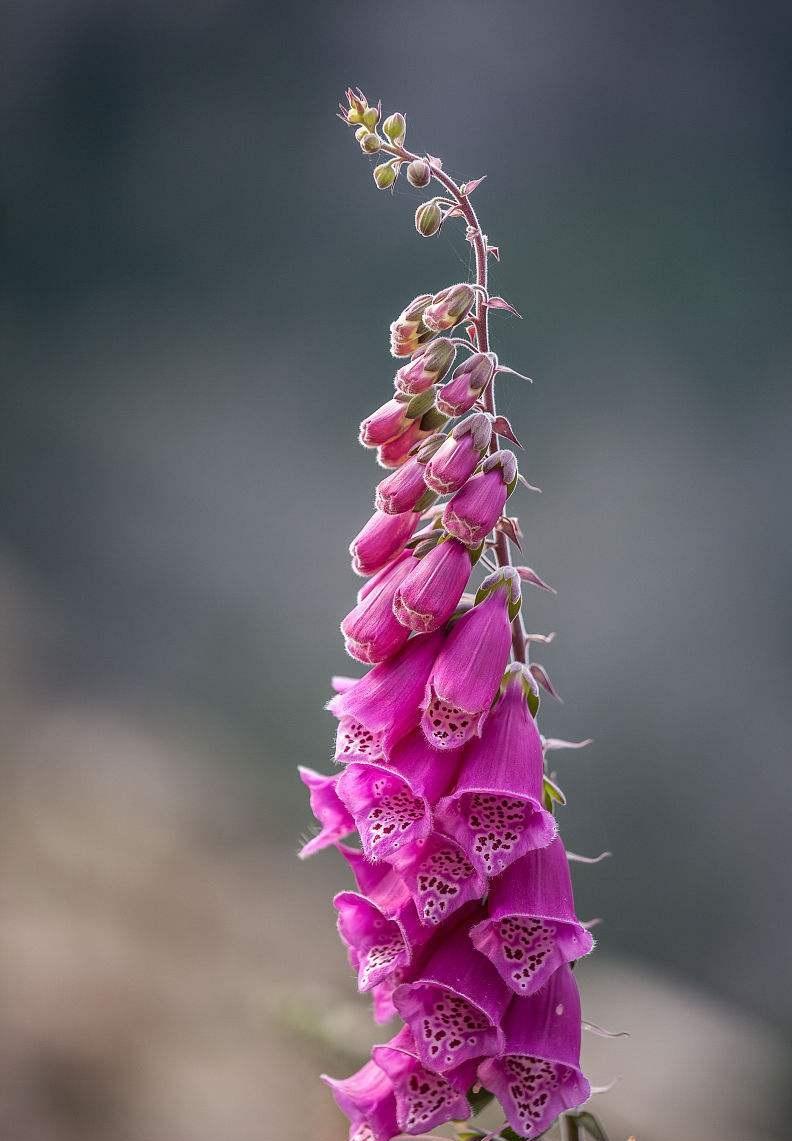
Step 1
Water foxgloves immediately after planting them, thoroughly soaking the soil around the plants. Keep the soil somewhat wet initially, watering about three times during the first week. Provide 1 inch of water each week afterward, maintaining consistently moist, but not wet, soil and adjusting your watering frequency after rainfall. Water foxgloves in early morning, and avoid getting their leaves wet to prevent diseases.
Step 2
Dig a 1-inch-deep trench in a 3-inch diameter around each foxglove plant. Sprinkle one handful of 5-10-5 granular fertilizer in each trench. Fill the trenches with soil, and water the soil. Do this in early spring and again six and 12 weeks afterward. Alternatively, apply a 1- to 2-inch-thick layer of compost around the foxgloves each spring to provide nutrients.
Step 3
Spread a 2-inch-thick layer of organic mulch, such as shredded leaves or bark chips, on the soil around the foxgloves. Keep the mulch about 1 to 2 inches away from the plants. Mulch promotes soil moisture retention and keeps weeds at bay.
Step 4
Treat and prevent powdery mildew outbreaks by properly spacing plants to allow proper air circulation, water from below and not overhead, clean up leaf debris below foxgloves and prune off affected foliage. Spray severe infections with ready-to-use Neem oil or horticultural oil, saturating the plant's foliage and repeating weekly or as needed. Do not use oil-based products when temperatures are above 90 degrees Fahrenheit or the plant is stressed from drought.
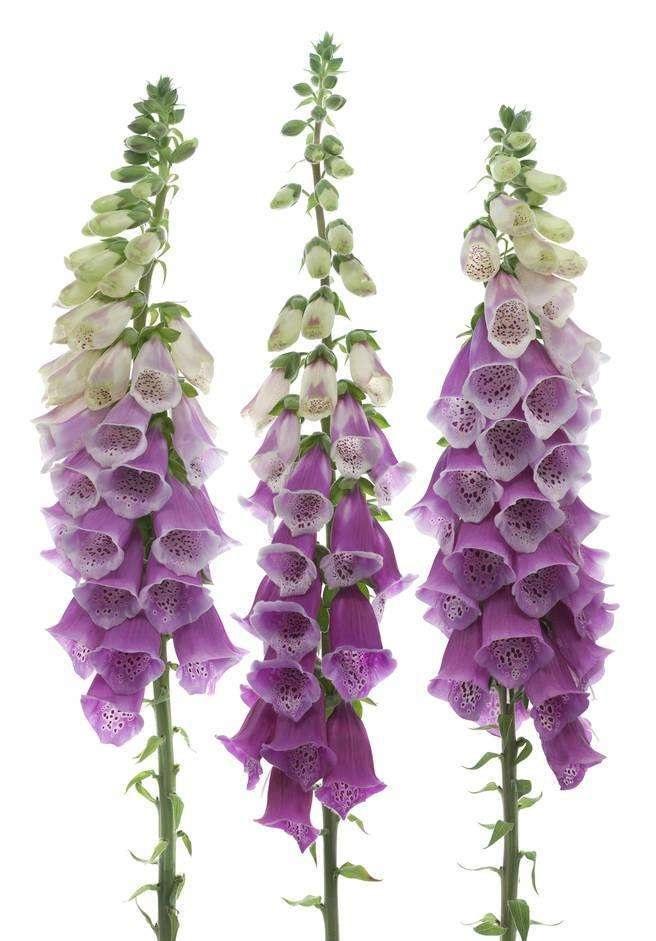
Step 5
Remove slugs or snails from the foxglove's foliage in the early morning when the pests are most active. Wear gloves and pick the pest from the plant, placing them in a small bowl of soapy water. Prune off any foliage damaged by the snails or slugs.
Step 6
Pinch off the foxgloves' wilted or faded flowers. Doing so keeps the plants looking neat and prevents them from spending energy on making seeds. Alternatively, wait until two-thirds of the flowers have faded, and then use pruning shears to cut back each entire stalk at the point where its base meets the bottom leaves.

Step 1
Water foxgloves immediately after planting them, thoroughly soaking the soil around the plants. Keep the soil somewhat wet initially, watering about three times during the first week. Provide 1 inch of water each week afterward, maintaining consistently moist, but not wet, soil and adjusting your watering frequency after rainfall. Water foxgloves in early morning, and avoid getting their leaves wet to prevent diseases.
Step 2
Dig a 1-inch-deep trench in a 3-inch diameter around each foxglove plant. Sprinkle one handful of 5-10-5 granular fertilizer in each trench. Fill the trenches with soil, and water the soil. Do this in early spring and again six and 12 weeks afterward. Alternatively, apply a 1- to 2-inch-thick layer of compost around the foxgloves each spring to provide nutrients.
Step 3
Spread a 2-inch-thick layer of organic mulch, such as shredded leaves or bark chips, on the soil around the foxgloves. Keep the mulch about 1 to 2 inches away from the plants. Mulch promotes soil moisture retention and keeps weeds at bay.
Step 4
Treat and prevent powdery mildew outbreaks by properly spacing plants to allow proper air circulation, water from below and not overhead, clean up leaf debris below foxgloves and prune off affected foliage. Spray severe infections with ready-to-use Neem oil or horticultural oil, saturating the plant's foliage and repeating weekly or as needed. Do not use oil-based products when temperatures are above 90 degrees Fahrenheit or the plant is stressed from drought.

Step 5
Remove slugs or snails from the foxglove's foliage in the early morning when the pests are most active. Wear gloves and pick the pest from the plant, placing them in a small bowl of soapy water. Prune off any foliage damaged by the snails or slugs.
Step 6
Pinch off the foxgloves' wilted or faded flowers. Doing so keeps the plants looking neat and prevents them from spending energy on making seeds. Alternatively, wait until two-thirds of the flowers have faded, and then use pruning shears to cut back each entire stalk at the point where its base meets the bottom leaves.
0
0
求助
dxstxnxx
2018年09月06日

Today i found out that a white worm had burrowed itself into my succulent and had completely eaten through almost 3 inches of the stem. I removed the worm and unfortunately had no choice but to behead the top from the root system. What do i do now? this was one of my favorite succulents and i dont want it to die :// someone please help
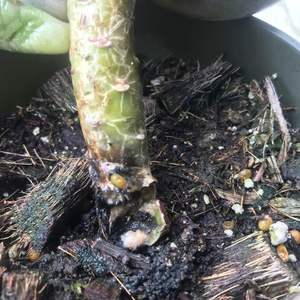

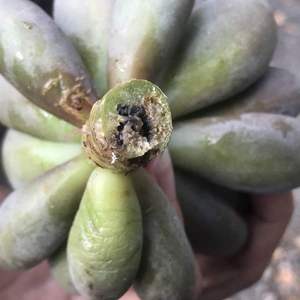
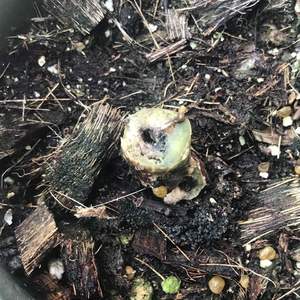
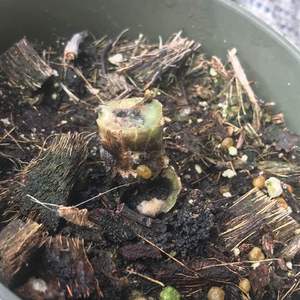
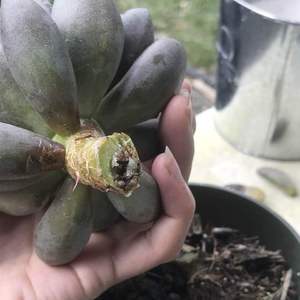






0
0
succulentlover11:hello everyone I'm new to this app and I really need some advice on my sedum firestorm it's leaves are turning all green and red is fading and it's leaves are very sad any help or advice would be really appreciated
马耳东风:cut off bad parts and make wait dry. you could use some medicine smear at wound prevent it become putrid. can buy medicene at taobao
文章
Miss Chen
2018年09月05日

虫害分布
分布于黑龙江、吉林、辽宁、内蒙古、北京、安徽、台湾、广东、陕西、四川等地。寄主是苹果、山楂、核桃、柞等。
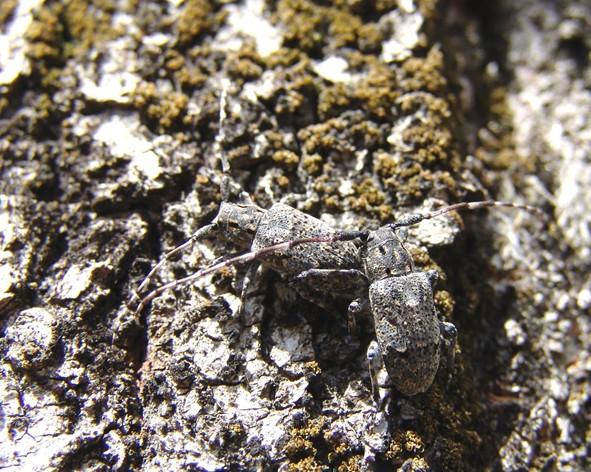
虫害形态特征
成虫体长8-15mm,体宽3-6mm。体黑色,全身被灰色短绒毛,并杂有许多火黄色或金黄色毛斑。前胸背板中央具丝绒般的斑纹4个,每边两个,前后各1,排成直行,前斑长形,后斑较短,近乎卵圆形,两者之间的距离超过后斑的长度;每个黑斑的左右两边都镶有相当宽的火金或金黄色毛斑。鞘翅饰有许多黄色和黑色的斑点,每翅中端的灰色毛较淡,在此淡色区的上缘和下缘中央,各有一个较大的不规则形的黑斑,其他较小的黑斑大致圆形,分布于基部之上,基部中央则极少或缺如;黄斑形状各异,分布全翅。小盾片中央火黄或金黄色,两翅较深。鞘翅沿小盾片周围的毛大致淡色。触角部分赤褐色,第1节背面杂有金黄色毛,第3节起每节基部近1/2为灰白色,各节下缘密生灰白及棕色缨毛。体腹面及足亦有灰白色长毛。体卵形。头部静止时与前足基部接触;额极宽;复眼很小,分成上下两叶,期间仅有一线相连,下叶较大,但长度只及颊长之半;头面布有刻点及颗粒。雄虫触角超出体长1/3,雌虫与体等长,柄节端疤有时不大显著,开放式。前胸背板具刻点及小颗粒,表面不平坦,中央后方及两侧有瘤状突起,侧面近前缘处有一瘤突。鞘翅基部1/4具颗粒。
虫害发生规律
黑龙江2年1代,以幼虫或成虫越冬。翌春5月初越冬成虫开始活动取食并交配产卵。卵多产在树皮缝、枝节、死节处,尤喜产在腐朽变软的树皮上,卵期15天。5月底孵公,初孵幼虫蛀入皮层至皮下于韧皮部与木质部之间蛀食。秋后于蛀道内越冬。第2年为在至7月底前后开始老熟于隧道内化蛹,蛹期10余天,羽化后咬圆形羽化孔出树,于落叶层和干基各种缝隙内越冬。

虫害防治方法
主要的措施包括选育抗性树种,加强林地水肥管理,保证林木生长健旺,营造各种混交林,保护和招引啄木鸟及其他天敌,及时清除虫害木,避免天牛的大量发生等。局部发生时,须及时采取措施加以控制,如立即清除严重被害木,就地剥皮,置阳光下曝晒数周后利用。
虫害药剂防治
(1)涂白。秋、冬季至成虫产卵前,国光糊涂(树干涂白粉剂)与水按1:1比例混配好,加入200倍国光必治涂于树干基部(2米以内),防止产卵,可加入多菌灵、甲基托布津等药剂防腐烂,做到有虫治虫,无虫防病。同时,还可以起到防寒、防日灼的效果。
(2) 喷药防治。成虫发生期,向树干喷洒40%国光必治乳油800倍液、国光依它(45%丙溴辛硫磷)800-1000倍液,或者国光Bt、国光苏松质病毒等杀灭成虫。
(3)虫孔注药。幼虫危害期(6-8月),用小型喷雾器从虫道注入国光防蛀液剂,也可浸药棉塞孔,然后用粘泥或塑料袋堵注虫孔。
(4)熏蒸防治。磷化铝片是良好的熏蒸杀虫剂,可用该药堵孔,黄土封口,杀死幼虫。每孔放1/20片(3克/片)。或薄膜封干后,往薄膜内放药片熏蒸。
分布于黑龙江、吉林、辽宁、内蒙古、北京、安徽、台湾、广东、陕西、四川等地。寄主是苹果、山楂、核桃、柞等。

虫害形态特征
成虫体长8-15mm,体宽3-6mm。体黑色,全身被灰色短绒毛,并杂有许多火黄色或金黄色毛斑。前胸背板中央具丝绒般的斑纹4个,每边两个,前后各1,排成直行,前斑长形,后斑较短,近乎卵圆形,两者之间的距离超过后斑的长度;每个黑斑的左右两边都镶有相当宽的火金或金黄色毛斑。鞘翅饰有许多黄色和黑色的斑点,每翅中端的灰色毛较淡,在此淡色区的上缘和下缘中央,各有一个较大的不规则形的黑斑,其他较小的黑斑大致圆形,分布于基部之上,基部中央则极少或缺如;黄斑形状各异,分布全翅。小盾片中央火黄或金黄色,两翅较深。鞘翅沿小盾片周围的毛大致淡色。触角部分赤褐色,第1节背面杂有金黄色毛,第3节起每节基部近1/2为灰白色,各节下缘密生灰白及棕色缨毛。体腹面及足亦有灰白色长毛。体卵形。头部静止时与前足基部接触;额极宽;复眼很小,分成上下两叶,期间仅有一线相连,下叶较大,但长度只及颊长之半;头面布有刻点及颗粒。雄虫触角超出体长1/3,雌虫与体等长,柄节端疤有时不大显著,开放式。前胸背板具刻点及小颗粒,表面不平坦,中央后方及两侧有瘤状突起,侧面近前缘处有一瘤突。鞘翅基部1/4具颗粒。
虫害发生规律
黑龙江2年1代,以幼虫或成虫越冬。翌春5月初越冬成虫开始活动取食并交配产卵。卵多产在树皮缝、枝节、死节处,尤喜产在腐朽变软的树皮上,卵期15天。5月底孵公,初孵幼虫蛀入皮层至皮下于韧皮部与木质部之间蛀食。秋后于蛀道内越冬。第2年为在至7月底前后开始老熟于隧道内化蛹,蛹期10余天,羽化后咬圆形羽化孔出树,于落叶层和干基各种缝隙内越冬。

虫害防治方法
主要的措施包括选育抗性树种,加强林地水肥管理,保证林木生长健旺,营造各种混交林,保护和招引啄木鸟及其他天敌,及时清除虫害木,避免天牛的大量发生等。局部发生时,须及时采取措施加以控制,如立即清除严重被害木,就地剥皮,置阳光下曝晒数周后利用。
虫害药剂防治
(1)涂白。秋、冬季至成虫产卵前,国光糊涂(树干涂白粉剂)与水按1:1比例混配好,加入200倍国光必治涂于树干基部(2米以内),防止产卵,可加入多菌灵、甲基托布津等药剂防腐烂,做到有虫治虫,无虫防病。同时,还可以起到防寒、防日灼的效果。
(2) 喷药防治。成虫发生期,向树干喷洒40%国光必治乳油800倍液、国光依它(45%丙溴辛硫磷)800-1000倍液,或者国光Bt、国光苏松质病毒等杀灭成虫。
(3)虫孔注药。幼虫危害期(6-8月),用小型喷雾器从虫道注入国光防蛀液剂,也可浸药棉塞孔,然后用粘泥或塑料袋堵注虫孔。
(4)熏蒸防治。磷化铝片是良好的熏蒸杀虫剂,可用该药堵孔,黄土封口,杀死幼虫。每孔放1/20片(3克/片)。或薄膜封干后,往薄膜内放药片熏蒸。
0
0








